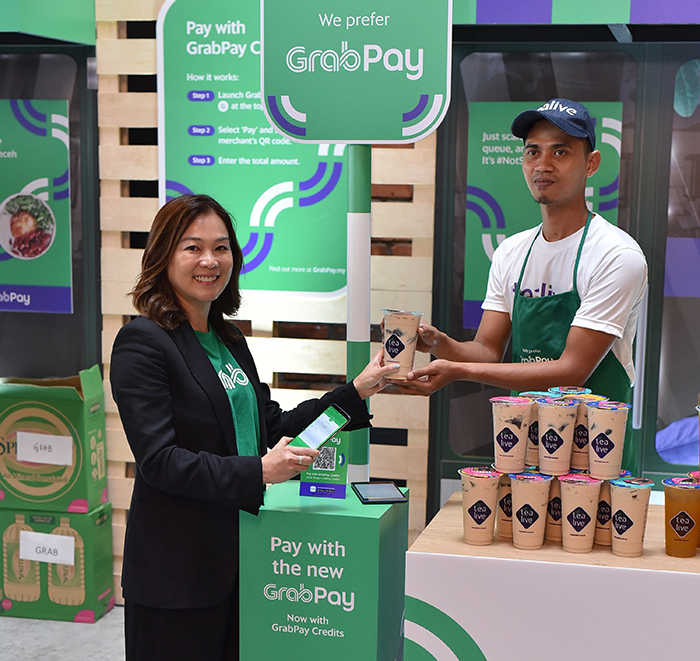Despite late entry, GrabPay to cash in on mobile wallets: Page 2 of 2
By Edwin Yapp June 27, 2018
Too many players?

The market for mobile wallets is heating up in Malaysia as more players enter the fray in a bid to cash in (no pun intended) on the booming growth of cashless payment systems via smartphones.
In January this year, Axiata Group’s digital arm, Axiata Digital Services Sdn Bhd, introduced its Boost app to the market with bold ambitions to be the market leader for mobile wallets, pledging to acquire as many as 100,000 merchants by the end of 2018.
Boost claims to have over 2.5 million users and online and offline merchants located in over 25,000 touchpoints.
READ ALSO: A year on, Axiata Digital tags on mobile wallet to Boost app
And three months before that, rival startup Fave – formerly known as Groupon Malaysia and a brainchild of Joel Neoh – launched its mobile wallet FavePay, signalling its intention to stake a claim in the payments game. FavePay claims to be available in over 10 cities and three countries across Southeast Asia.
Besides Boost and FavePay, traditional banks such as CIMB Bank Bhd has Touch ‘n Go and CIMB Pay; Maybank has MaybankPay, which claims to be the first mobile wallet in Malaysia.
Meanwhile, older technology companies are trying to branch out, namely Kipple from Green Packet Bhd, as well as non-financial players trying to enter the payment game in the form of AirAsia Bhd’s BIGPay.
The challenge to adoption isn’t only in the form of multiple players but from the fact that cash itself is so ubiquitous and therefore almost impossible to displace.
In Singapore, where technology adoption is considered the most advanced in the region, the gambit to channel consumers into mobile wallets has not paid off, as reported by media outlets The Straits Times and Channel News Asia.
Even Singapore’s prime minister, Lee Hsien Loong had commented on this in his National Day Rally speech. The debate is similar in Malaysia, where industry players admitted as much that cash is still king in the country.
GrabPay’s Ooi acknowledged that the market is crowded but remained optimistic of its chances to succeed. When asked why was this so, she argued that since 80% of Malaysians are still hooked on cash, the market is big enough to enter.
“The market is fragmented and consolidation will likely happen, as it is inevitable,” she said.
“However, we believe our differentiator is that GrabPay users never have to leave our app to use the service,” she argued. “As we drive more transactions within the platform, we will add more services to it.”
Analyst weighs in
Research firm IDC estimates the value of Singapore’s and Malaysia’s e-wallet transactions to be about US$450 million and US$520 million respectively as at the end of 2017. It noted that Malaysia’s total e-wallet transaction stands at 10.2%, while Singapore stands at 9.7% of total digital transactions.
According to research manager for IDC Financial Insights Sui-Jon Ho, the challenge with most mobile wallets is that they are inherently branded.
“Consumers might find themselves having downloaded a wallet for say ‘company X,’ which can only be used with the said provider’s partners.
“But these partners seldom align with the merchants/billers a consumer would like to interact with,” he argued. “This poses the problem of acceptance within the ecosystem – the individual cannot make payments through their preferred wallets (if any), and merchants cannot accept all methods unless they are willing to bear the fees introduced by such alternative payment brands.”
Ho explained that fragmented efforts by the supply side impair the ability of payments technologies to gain critical mass. As a result, the market becomes flooded with too many players and their respective propositions – far too many for consumers to choose from, he added.
“The thing is, consumers still have a finite spending capacity, regardless of payment method,” he said. “Success stories like AliPay (in China) are rightly infrequent, and one would find that they are often the sole first-mover in a technological gambit that has made them successful.”
Still Ho believes that given time, user behaviour or preferences could change given the right incentives. But for such changes to occur, the misalignment between the ecosystem's supply- and demand-sides need to be addressed, he argued.
“In this respect, regulators have a part to play. They must take a stance in deciding not just what paperwork to fill when a payment is made, but what actual payment functions must be made available by merchants or financial institutions. The Bank of Thailand's recently mandated QR-code checkout is a prime example.”
Related stories:
Has cashless finally arrived in Malaysia? Not really
Grab aims to be Malaysians’ everyday app
FavePay anticipates paying over US$100mil to merchants by year-end
For more technology news and the latest updates, follow us on Facebook, Twitter or LinkedIn


